Home>English Web Site(About Mori no Kura - a message from us -)>How Our Sake is Made
How Our Shochu is Made

Here, we will use our barley shochu as an example to show how shochu is made at Mori no Kura.
Note that the process is different from when we make shochu from the kasu (lees) of sake brewing, since in that, only kasu and water are used.
※Displays the description when you click the heading.
- 1. The raw materials click
Two-row barley from Fukuoka
-
We use two-row barley grown in Fukuoka Prefecture.
The outside of barley has protein, and the germ portion has fats and vitamins in it. As these will lead to bitter and other rough flavors in the final product, it is best to remove as much of these parts as possible, and so we mill the barley down to 65 percent of its original size, i.e. we mill away the outer 35 percent.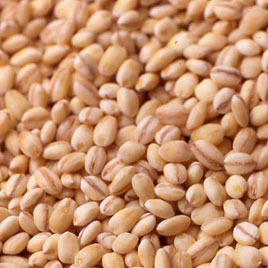
- 2. Washing, soaking and steaming the barley click
Build a foundation of preparation to increase the yeast
-
After the powder remaining from milling has been washed away the barley is soaked in water for about 60 minutes. Then, after straining off all the excess water, the barley is steamed to physically break down the starch inside so that enzymes and yeast can work on it. Ideally, the water will soak into the very center of the barley, slightly gelatinizing the grains.
- 3. Koji making click
the important step of growing white koji mold on the barley
-
After the barley has cooled down sufficiently and spores of a mold known as koji mold (aspergillus oryzae) is sprinkled on it within a special room. The mold is allowed to carefully grow onto the grains for about 40 hours. During this time enzymes that will convert the starch in the barley into glucose are created, as is lots of citric acid from the barley that will make the fermenting mash acidic and protect it from wild bacteria during fermentation.
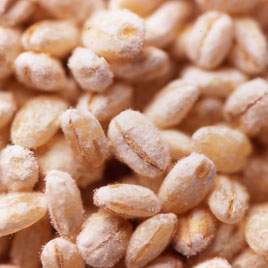
- 4. Preparing the primary fermentation click
barley-based koji and water are mixed in a tank, yeast is added
-
When making shochu, the ingredients that go into the fermenting mash are added in two separate stages. The main objective of the first fermentation is to create a large number of yeast cells. It is similar to the yeast starter used in sake brewing, but in this case, barley-based koji and water are mixed in a tank, yeast is added, and this ferments for about a week.
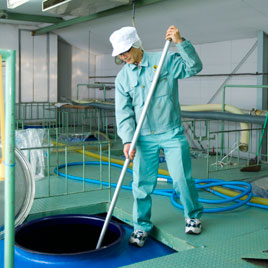
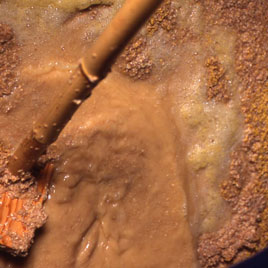
- 5. Preparing the secondary fermentation click
Steamed barley and water are added to the primary fermentation
-
Steamed barley and water are added to the primary fermentation to create the secondary fermentation. In this mash, starch to sugar conversion and sugar to alcohol fermentation are both taking place. The mash ferments for about two weeks, during which time the temperature is carefully controlled to ensure the contents develop properly.
- 6. Distillation click
the step that influences flavor the most
-
Next the mash is distilled, and this is the step of the process that both brings out the alcohol but also other flavor components as well and will be the deciding factor in the final quality of the shochu. Basically there are two ways to distill shochu. The traditional way is to distill at atmospheric pressure, and this allows the distinctiveness of the raw materials to come through, and lets the product benefit from aging as well. The other is to distill at low pressure and lower temperatures, and this leads to comparatively lighter and more aromatic shochu.
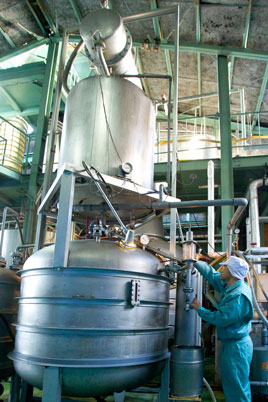
- 7. Filtration and storage click
preparing the product for market
-
After distillation, if needed the shochu may be filtered, and the brash nature of the shochu is allowed to mellow out and round out through aging in a tank or a earthen vessel. After the proper level of maturity has been reached, it is cut with a little bit of water, bottled, and shipped.
